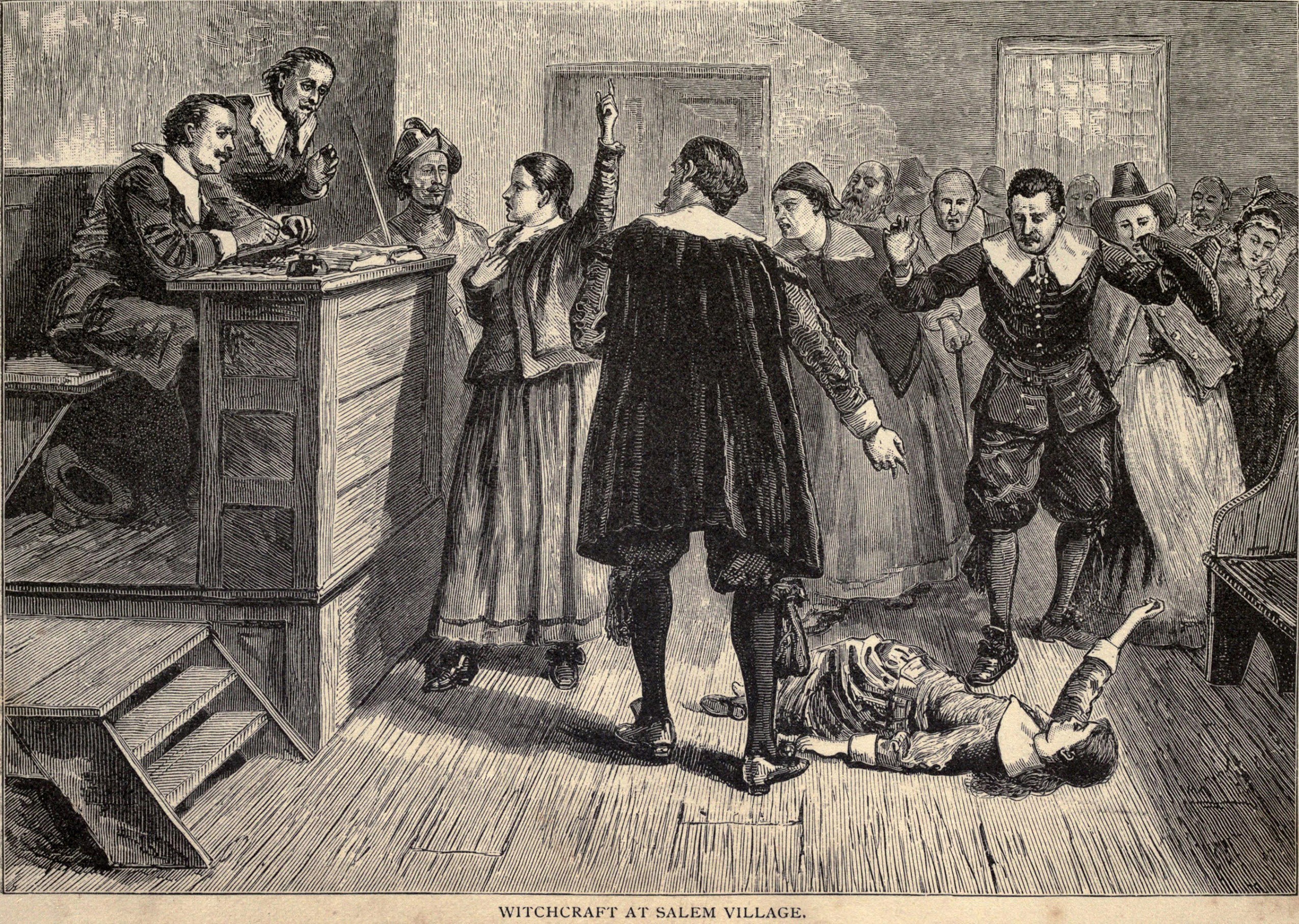


Salem, Massachusetts, 1692: a young girl screams in agony as she feels a thousand knives pricking her skin. Yet no blood is drawn. Her neck twists and her body contorts like a rag doll but her muscles are frozen, her limbs fixed in place. Many have heard of the Salem Witch Trials of 1691–92, which saw 200 people accused of witchcraft, 30 of whom were found guilty with 23* executed. But what was the real cause? Was it genuine demonic possession? A case of mass hysteria? Or could it have been that the people of Salem were simply tripping on magic mushrooms?
As much as the final suggestion sounds like a ridiculous conspiracy, it is in fact a plausible theory to explain the seizures and other symptoms of ‘bewitchment’ suffered by Salem’s population.
The events leading up to the infamous witch trials began with the pastor’s nine-year-old daughter and eleven-year-old niece displaying symptoms that became stranger and stranger. Previously well-behaved, Puritan girls, they complained of an invisible force biting and pinching them; they leapt around as if trying to fly and suffered intense muscle spasms.
Whatever was ailing them quickly spread, with many other people in Salem soon displaying the same symptoms. A local doctor ‘diagnosed’ a case of bewitchment and Salem was swept up in the notorious witch hunt that would claim two dozen lives.
The truth of what happened over 300 years ago has long eluded experts. However, in 1976, Dr Linnda Caporael from the Rensselaer Polytechnic Institute in Connecticut published an article providing evidence for the theory that the real culprit went by the name, not of Satan, but ergot.
Ergot is a type of fungus that typically grows on rye and thrives when cold winters are replaced by warm, wet springs and summers – conditions which are recorded as having been present in Salem in 1692. No ordinary mould, it contains lysergic acid – an ingredient in the hallucinogenic narcotic LSD – and those who ingest it experience hallucinations, delusions, paranoia, muscular spasms and cramps, cardiovascular problems and a weakened immune system. These symptoms reflect the strange behaviour recorded in Salem. Ergot was a common fungus in Europe and America during this period – so common, in fact, that people thought it was a part of the plant itself and were unaware of its poisonous properties – and the weather conditions recorded in Salem in 1691 were perfect for it to spread. Moreover, rye was a staple crop at the time and there are records showing that the pastor bought grain from the western parts of the town which was where most of the afflicted individuals lived, therefore suggesting that it was rye crops from this part of town that were contaminated with ergot.
Since the immune system does not fully develop until adulthood, symptoms of ergot poisoning would have appeared first among children and teenagers, which matches the timeline of the pastor’s daughter and niece being the first to display signs of ‘bewitchment’ before it spread to others in the town.
By May 1693 the Salem witch trials drew to a sudden close. The abruptness with which the town returned to normality further indicates that the events were not the result of hysteria or disease, but rather that the ergot-contaminated rye had run out and the new crop was fungus-free.
It is highly likely that Salem, or even America, was not the only place in which ergot poisoning led to an alleged outbreak of witchcraft. Across medieval Europe, witch hunts were rare in places that did not rely on rye as a staple food. Ireland, for example, where oats were the main crop, saw a mere handful of witchcraft trials, while witch trials in Scotland were most common in areas where rye was grown. Moreover, according to available weather records, witch purges tended to succeed warm, wet springs.

While we cannot (yet) know for sure what really happened in Salem in the late 17th century, the theory of ergot poisoning has recently sparked more research into the science behind reports of the paranormal. We all know that damp and mould in houses can trigger physiological effects, such as allergies and asthma, but the effects that indoor mould exposure can have on cognitive and other brain functioning are only just being explored. Researchers from Clarkson University in New York are investigating the theory that poor air ventilation and decades of mould growth could be making people hallucinate, and they have discovered that some moulds commonly found in the house can cause symptoms similar to those of ergot. Indeed, a common airborne fungus can grow on latex paint and produces ergot spores which can lead to hallucinations and conviction of the presence of ghosts. While poorly insulated older buildings with damp nooks and dusty crannies are more likely to be a breeding ground for toxic mould (and are also the buildings most associated with reportings of the supernatural) damp can still occur in a newly built home if the water used when the house was built has not yet dried out.
The world we live in is still shrouded in mystery and there is much that we will maybe never know for certain. It is entirely possible that the spirits of those departed remain in this world to tie up their unfinished business. However, ergot poisoning provides a plausible explanation, both for the Salem witch trials and for modern day hauntings. So, as Halloween draws ever nearer and the undead begin to stir in their graves, perhaps it’s worth opening a window and reaching for the mould killer before calling an exorcist.
*Nineteen accused witches were hanged, one was crushed to death and four died in prison.
Genevieve Silk